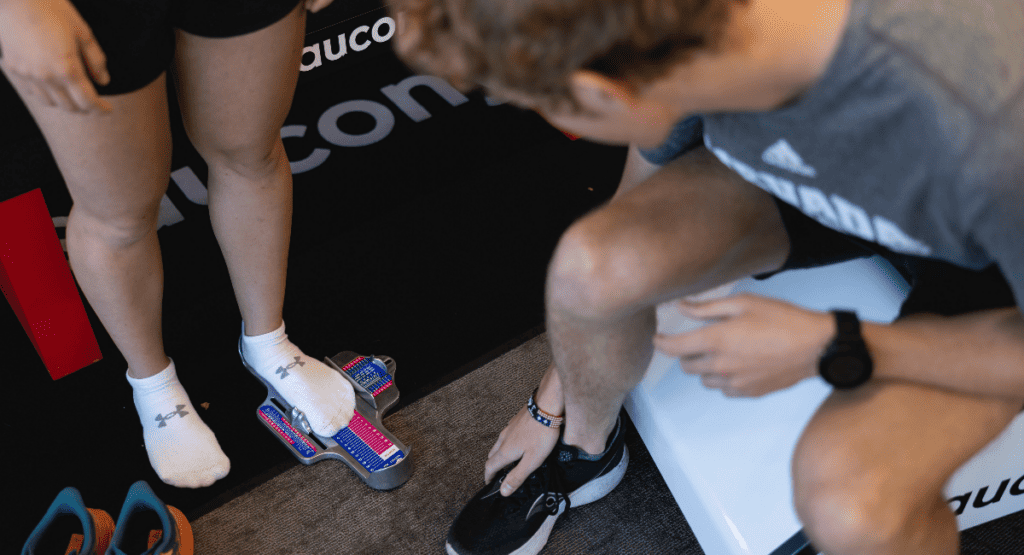Welcome to Reno Running Company’s ultimate guide to properly fitting running shoes. With 26 bones each, our feet are truly biomechanically complex beasts. Despite advancements in running shoe technology, finding the perfect fit can still be a challenge. In this guide, we’ll look at how a running shoe should fit when you try it on in the store, as well as signs of an improper fit.

Signs of a Proper Fit
When you’re trying on new running shoes, pay attention to three key areas: the toe box, the midfoot, and the heel cup.
- Toebox: The front of the shoe is called the toe box. This is the part of the shoe where we typically see the most fit issues. At a minimum, you should aim for a thumb’s width of space between the end of your toe and the shoe. Initially, this may feel like a lot, but it’s crucial to accommodate any swelling during your run and prevent toe discomfort when running downhill.
- Midfoot: The midfoot is the area directly beneath the arch of the foot. In stability shoes, this is where the medial wedging that supports the arch of your foot is located. Ensure a snug fit against the arch without any bagging in the upper material of the shoe. It should feel secure without being overly tight.
- Heel Cup: At the back of your running shoe sits the heel cup, attached to something called the cage where your shoelaces attach. The cage doesn’t stretch, allowing the laces to securely pull your foot back into the heel cup and lock it in place. Your heel should fit snugly without pinching or binding. Some heel lift is expected when walking or running, but it shouldn’t feel like the shoe is about to fall off.
Once you have your new shoes, wear them around the house for a couple of hours. Look out for any hotspots that may develop on your feet. A little discomfort now could escalate on your first run. If the shoes pass the at-home test, move on to short runs. Avoid long runs to prevent discovering excessive blistering halfway through. If all goes well, congratulations, you have a perfectly fit pair of shoes!

Signs of an Improper Fit
After wearing your shoes at home or during trial runs, watch for signs that your shoes may not be fitting well.
- Tingling or numbness: Numbness in the foot suggests insufficient volume within the shoe. Consider moving to a larger size or a shoe with a wider last.
- Blisters between or on top of toes: Cotton socks can cause blisters, but improperly fitting shoes can also be the culprit. Blisters indicate that the shoe is too small, causing toes to rub against the end or each other.
- Blisters on the ball of your foot: Blisters here may indicate the shoe is too wide or the arch doesn’t match your foot. Consider switching to a narrower shoe or using an insole to adjust the arch.
- Bruised toes or black toenails: This occurs when the shoe is too short, and toes hit the end of the shoe. Ensure at least a thumb’s width between toes and the toe cap.
- Heel blisters: A too-wide heel cup may cause heel blisters. Use the Runner’s Loop lacing trick cautiously to snug the heel cup without cutting off circulation.
If you notice any issues, visit one of our stores, even if you didn’t purchase the shoes from us. Prompt returns and exchanges within a month of purchase make the process smoother.

Best Hack for a Perfect Fit?
Visit Reno Running Company!
The easiest way to ensure a perfect pair of shoes is to visit our stores. Our expertly trained staff and specialty gait analysis can make a significant difference. If you choose to visit, wear the socks you’ll run in, and bring orthotics if you use them. Don’t hesitate to share your foot issues; we’ve seen it all and can help you find the perfect pair of shoes. Find a store near you at the link below:


